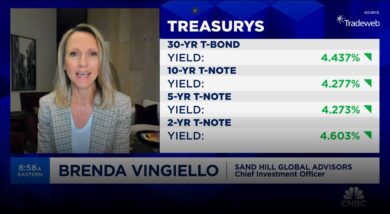I recently came across an article discussing an interesting question: If you could give your college-self one piece of advice, what would it be? Surprising or not, results came back almost 100% centered around finances, covering topics like compounding interest, budgeting, and the little to no ROI on a round of shots — all excellent advice in my opinion. But a couple responses related to saving for retirement caught my eye: ‘Begin your retirement savings as soon as you graduate’, and ‘Take advantage of the company 401(k) match the moment it’s offered.’
The Standard 401(k)
If your company offers a 401(k), contribute to it. Period. For 2015, if you are under 50 years old, you can contribute up to $18,000 of your pre-tax earnings annually. The 2015 limit for those 50 and older is $24,000 per year ( Source:
www.irs.gov ). And if your company offers any kind of match, take it – it’s free money! Plus, 401(k) contributions reduce your taxable income each year by your contribution amount. This means more money goes to fund your retirement, and less goes to Uncle Sam. Even if you cannot afford the $18,000 contribution each year, contribute the minimum required to take advantage of the full match, and at a maximum, as much as you can handle up to the IRS limit.
The Roth 401(k)
Roth 401(k)s were introduced back in 2006 but it took a few years for companies to jump on the band wagon. The key difference between a Roth 401(k) and a standard 401(k) is the tax treatment of your contribution. Roth 401(k) contributions are made with post-tax dollars. The annual contribution limits remain the same, but with a Roth 401(k), it amounts to $18,000 of post-tax dollars if you are under 50 years old, and $24,000 if you are over 50, no matter your income level (
Source:
www.irs.gov). Simply put, you do not gain any immediate tax benefit from contributing to a Roth 401(k), but contributing could still greatly benefit you in the long run. How? Since the funding comes from money that’s already been taxed, any earnings can be withdrawn tax free, as long as you’ve been invested for at least 5 years and you are over 59 ½ years old. This means paying tax today at a potentially lower tax rate, as compared to later on in your career, when you will likely be a high income earner in a high tax bracket. This amazing tool grants you potentially decades’ worth of tax free compounded return.
Compounded Return
We all understand the basic premise of compounding interest. In the good old days when money market funds paid a decent yield, you could put away money in the bank and see the balance grow with each monthly statement. Today, you have to put far more effort into investing in order to see a gain. But one simple tool we can all take advantage of is the company retirement plan. Regardless if your company offers a Standard 401(k), Roth 401(k) or both, investing early means you’ll grow the balance over time.
Let’s put these numbers into real terms:
Envision yourself contribution the maximum of $18,000 each year to your standard 401(k) for 30 years, and you obtain a 5% return each year on your investments. Over the course of 30 years, you’ll have accumulated over $1,200,000 in your retirement account. That’s real money that will only be taxable to you when you withdraw. If you are unable to contribute the max, even contributing $5,000 per year for 30 years at 5% will still yield almost $350,000.
Now, let’s say you grew that same initial $18,000 at 5% each year for 30 years, and never contributed again. Your original $18,000 investment will only amount to just over $75,000 by year 30. When compared to a $5,000 initial investment, the final number comes to just over $21,000.
Keep Saving
The key to retiring early is having enough savings to pay for your lifestyle after your earned income goes away. The only way to secure that savings balance (outside of winning the lottery, family inheritance or another cash windfall) is to save as much as you can early on, and continue saving each year. Looking at the examples above, there is a clear difference between $1,200,000 and $75,000 or $350,000 and $21,000. Continuing to contribute every year allows your balance to grow at a faster rate, due to both the added funds, and the increased compounding return. Also, the IRS periodically increases the maximum contribution amounts – in fact, the 2015 contribution limit of $18,000 was increased from $17,500 in 2014. To be safe, ask your Wealth Manager if you’re still contributing the maximum each year.
Invest Appropriately
At this point, you have made the effort to ensure you’re contributing to your retirement plan. The final step is to make sure you’re investing those funds appropriately. The general rule of thumb is that the farther away from retirement, the more risk you can afford. If there is a significant market correction one year, you have many years to recoup the loss. If you are closer to retirement, then generally your investment mix should be more conservative, as you’d hate to have a large chunk of your nest egg disappear a year or two before you stop working. (Sadly, this was a harsh reality faced by many after the 2008 downturn.)
The majority of company 401(k)s and Roth 401(k)s provide you with a pool of mutual funds from which to choose. Among these funds, you’ll want to build a diversified asset allocation by selecting the best rated funds with a good track record and low fees. If that overwhelms you, just ask your Wealth Manager to recommend the best allocation for you.
Ironically, this entire concept started as advice to give your college-self. By following these simple steps today, no matter what stage in your career you may be, your working-self can set up your retirement-self for success. Take advantage of the retirement plan(s) offered by your employer, contribute as much as you can every year, be sure to get the free money offered through the employer match, and invest appropriately. This is the best advice anyone could have given me in my collegiate days.
Articles and Commentary
Information provided in written articles are for informational purposes only and should not be considered investment advice. There is a risk of loss from investments in securities, including the risk of loss of principal. The information contained herein reflects Sand Hill Global Advisors' (“SHGA”) views as of the date of publication. Such views are subject to change at any time without notice due to changes in market or economic conditions and may not necessarily come to pass. SHGA does not provide tax or legal advice. To the extent that any material herein concerns tax or legal matters, such information is not intended to be solely relied upon nor used for the purpose of making tax and/or legal decisions without first seeking independent advice from a tax and/or legal professional. SHGA has obtained the information provided herein from various third party sources believed to be reliable but such information is not guaranteed. Certain links in this site connect to other websites maintained by third parties over whom SHGA has no control. SHGA makes no representations as to the accuracy or any other aspect of information contained in other Web Sites. Any forward looking statements or forecasts are based on assumptions and actual results are expected to vary from any such statements or forecasts. No reliance should be placed on any such statements or forecasts when making any investment decision. SHGA is not responsible for the consequences of any decisions or actions taken as a result of information provided in this presentation and does not warrant or guarantee the accuracy or completeness of this information. No part of this material may be (i) copied, photocopied, or duplicated in any form, by any means, or (ii) redistributed without the prior written consent of SHGA.
Video Presentations
All video presentations discuss certain investment products and/or securities and are being provided for informational purposes only, and should not be considered, and is not, investment, financial planning, tax or legal advice; nor is it a recommendation to buy or sell any securities. Investing in securities involves varying degrees of risk, and there can be no assurance that any specific investment will be profitable or suitable for a particular client’s financial situation or risk tolerance. Past performance is not a guarantee of future returns. Individual performance results will vary. The opinions expressed in the video reflect Sand Hill Global Advisor’s (“SHGA”) or Brenda Vingiello’s (as applicable) views as of the date of the video. Such views are subject to change at any point without notice. Any comments, opinions, or recommendations made by any host or other guest not affiliated with SHGA in this video do not necessarily reflect the views of SHGA, and non-SHGA persons appearing in this video do not fall under the supervisory purview of SHGA. You should not treat any opinion expressed by SHGA or Ms. Vingiello as a specific inducement to make a particular investment or follow a particular strategy, but only as an expression of general opinion. Nothing presented herein is or is intended to constitute investment advice, and no investment decision should be made based solely on any information provided on this video. There is a risk of loss from an investment in securities, including the risk of loss of principal. Neither SHGA nor Ms. Vingiello guarantees any specific outcome or profit. Any forward-looking statements or forecasts contained in the video are based on assumptions and actual results may vary from any such statements or forecasts. SHGA or one of its employees may have a position in the securities discussed and may purchase or sell such securities from time to time. Some of the information in this video has been obtained from third party sources. While SHGA believes such third-party information is reliable, SHGA does not guarantee its accuracy, timeliness or completeness. SHGA encourages you to consult with a professional financial advisor prior to making any investment decision.








